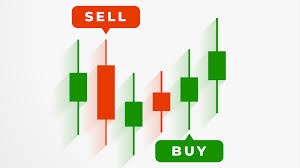What Are Trading Signals and Why Don’t They Always Work?
Trading signals on financial markets, especially in Forex, are widely used by both beginner and experienced traders. These signals provide automated or semi-automated recommendations for buying or selling assets based on various analytical data and indicators. However, many traders find that such signals often fail to deliver the expected results, raising doubts about their reliability. This article explores why Forex trading signals frequently do not work as intended and how to approach their use while accounting for the associated risks.

Understanding Trading Signals
Forex trading signals are tips or recommendations based on market analysis data that indicate potential profitable entry and exit points for trades. These signals are crucial for conducting effective technical analysis of Forex or other markets. Key indicators that form the basis of trading signals include tools such as Simple Moving Averages (SMA), Relative Strength Index (RSI), and the MACD indicator. Signals can come from automated systems (algorithmic trading programs) or professional analysts offering their strategies. However, trading signals often rely on mathematical calculations using historical data, which means they may not account for unexpected market volatility or external events like political developments or economic crises.
Free vs. Paid Forex Signals
Forex trading signals are typically offered either as a marketing strategy to attract traders to brokerage platforms or as a paid service promoted by analysts. The main issue with these signals is their low accuracy and lack of personalization.- Free Signals: These are often generated using standard algorithms that do not consider specific market conditions or individual trading strategies. As a result, traders may frequently encounter losses or miss opportunities. For instance, a signal might suggest buying the EUR/USD pair when the 50-day moving average is crossed, but such signals may fail to consider fundamental factors like European Central Bank decisions or economic instability.
- Paid Signals: Although positioned as more precise and detailed, paid signals also don’t guarantee success. Traders often purchase these signals based on promised results, but even high-quality paid signals may not account for sudden market volatility or unforeseen changes. For example, a paid signal may recommend entering the GBP/JPY market at a support level of 149.50, but unexpected political instability in Japan could quickly invalidate this signal.
Types of Trading Signals
The market offers a variety of trading signals, each based on different approaches to data analysis and market conditions. These signals help traders decide when to open or close positions.- Volume-Based Signals: These focus on changes in trading volumes for assets. An increase in volume can indicate a strengthening trend. For instance, rising volume during an uptrend could signal a buying opportunity. Indicators like On-Balance Volume (OBV) and the Money Flow Index (MFI) are often used for volume analysis.
- Intraday Signals: Designed for short-term trades within a single trading day, these signals react quickly to market dynamics and volatility. They are typically generated using minute-by-minute or hourly charts, catering to day traders focusing on small price fluctuations.
- Wave Signals: Based on Elliott Wave Theory, these signals analyze market cycles or waves to determine the market’s phase—growth or correction—and guide trading decisions. For example, the completion of the fifth wave might signal the closure of long positions.
- Arbitrage Signals: These identify price differences for the same asset across different markets, allowing traders to profit by buying on one exchange and selling on another. Common in high-frequency trading, these signals require quick action.
- Volatility Signals: Based on changes in asset volatility, these signals help predict sharp price movements. Indicators like the Volatility Index (VIX) and Bollinger Bands are used. For example, when an asset’s price approaches the edge of the Bollinger Bands, it might signal a buy or sell opportunity.
Types of Forex Signals by Analysis Method
Forex trading signals can be categorized based on the type of analysis they employ:- Technical Signals: Derived from chart analysis and indicators like moving averages (SMA), RSI, Fibonacci levels, and MACD. For instance, a price breakout above the 50-day moving average might signal a buy. These signals are particularly relevant for short-term trading as they respond to current price changes.
- Fundamental Signals: Based on macroeconomic news and events, such as GDP reports, interest rates, unemployment, and inflation data. For example, an interest rate hike in the U.S. might signal buying the dollar against other currencies. These signals tend to have a longer-term perspective.
- Sentiment Signals: Use data on market participants’ sentiment, including reports on large traders’ positions or fear and greed indices. For instance, if most traders are opening long positions on EUR/USD, this might signal a sell opportunity for contrarian traders.
- Algorithmic Signals: Generated by automated systems using predefined mathematical rules and models. These signals are often high-frequency and suit traders who prefer automated trading.
